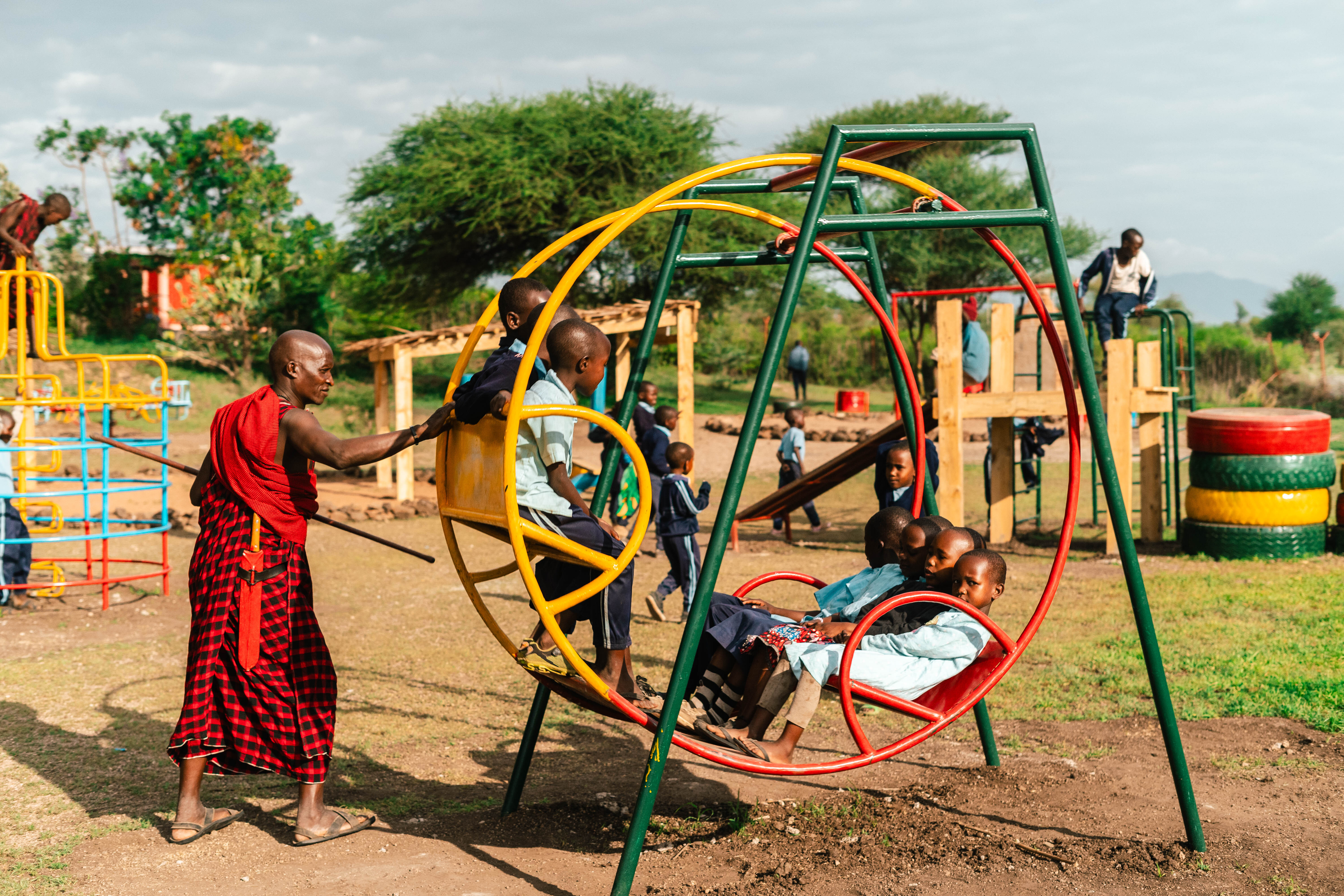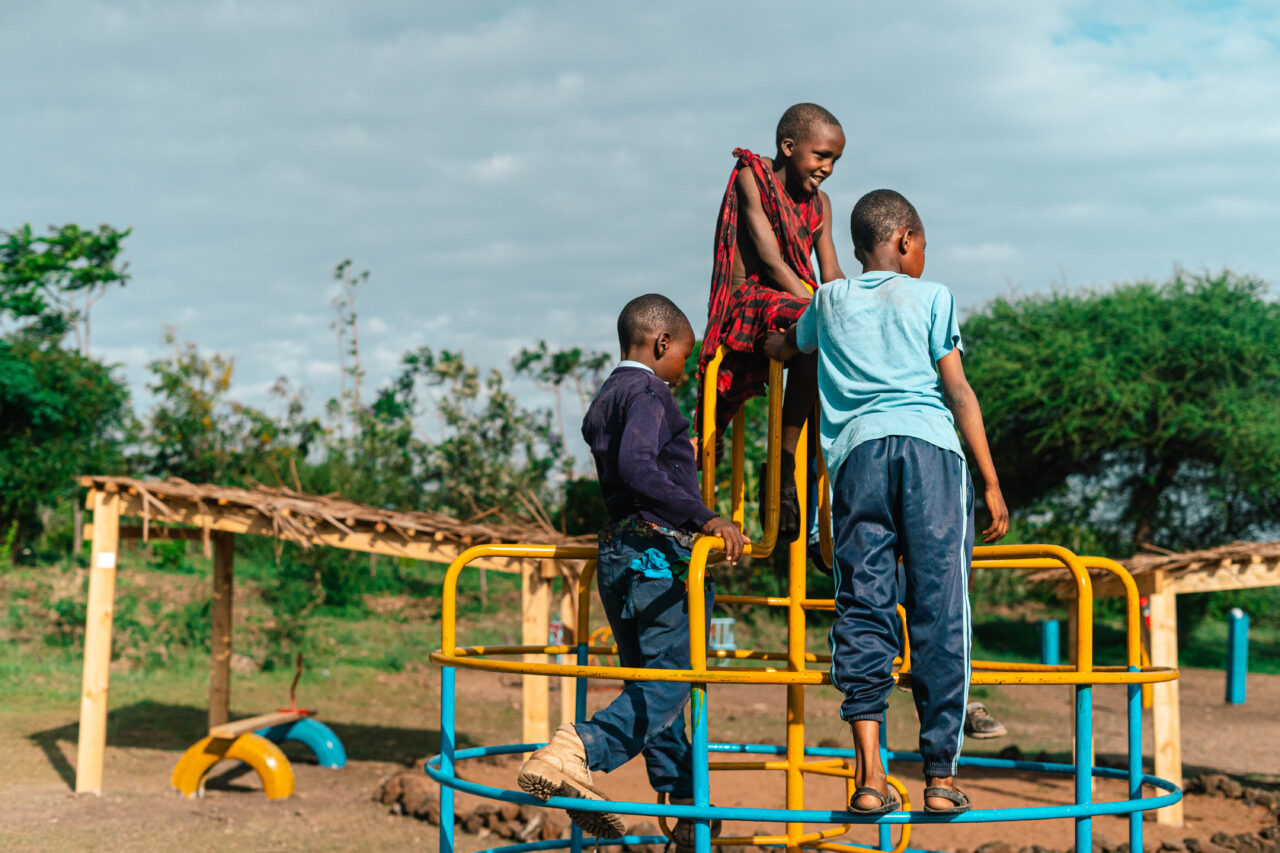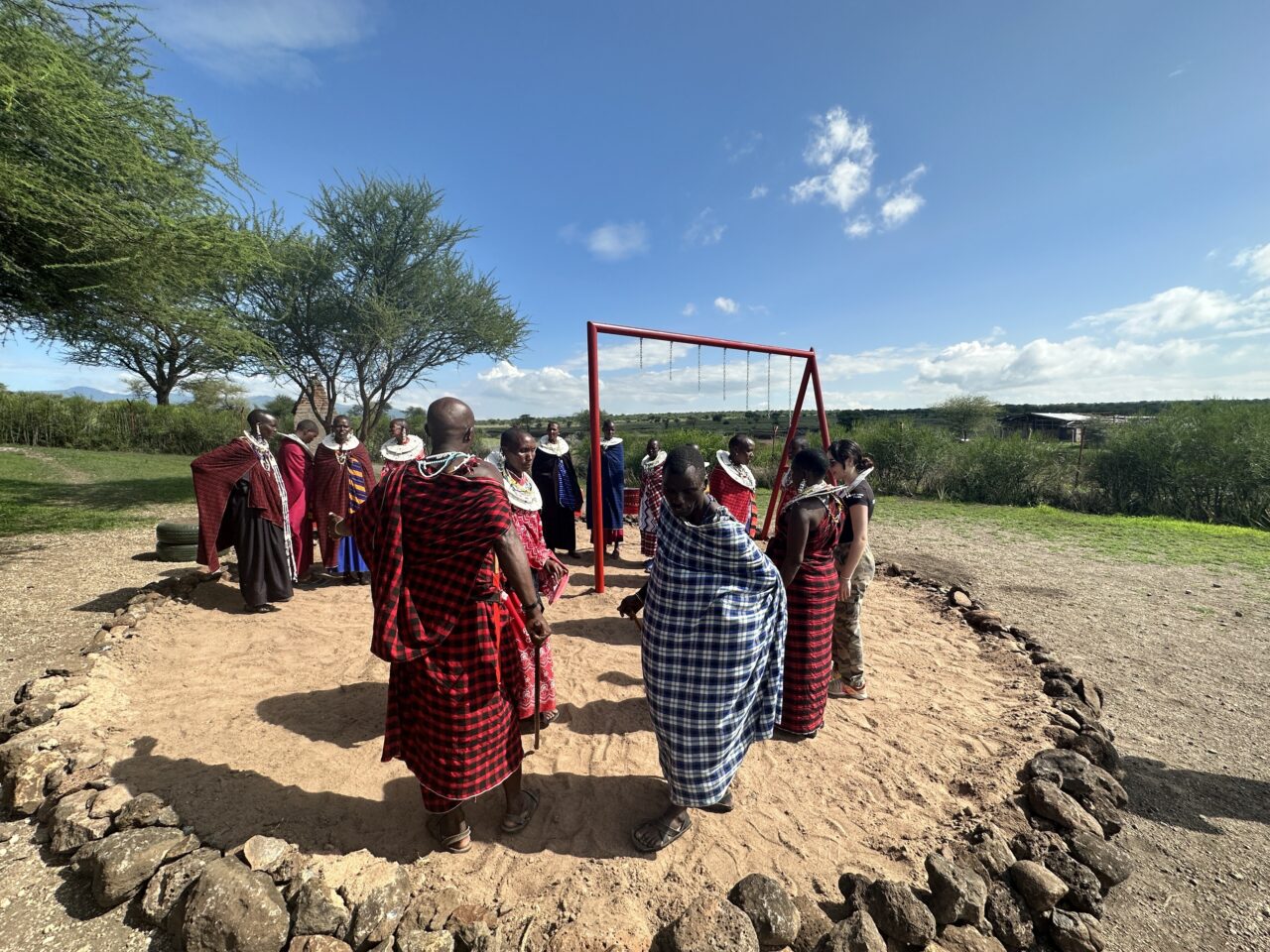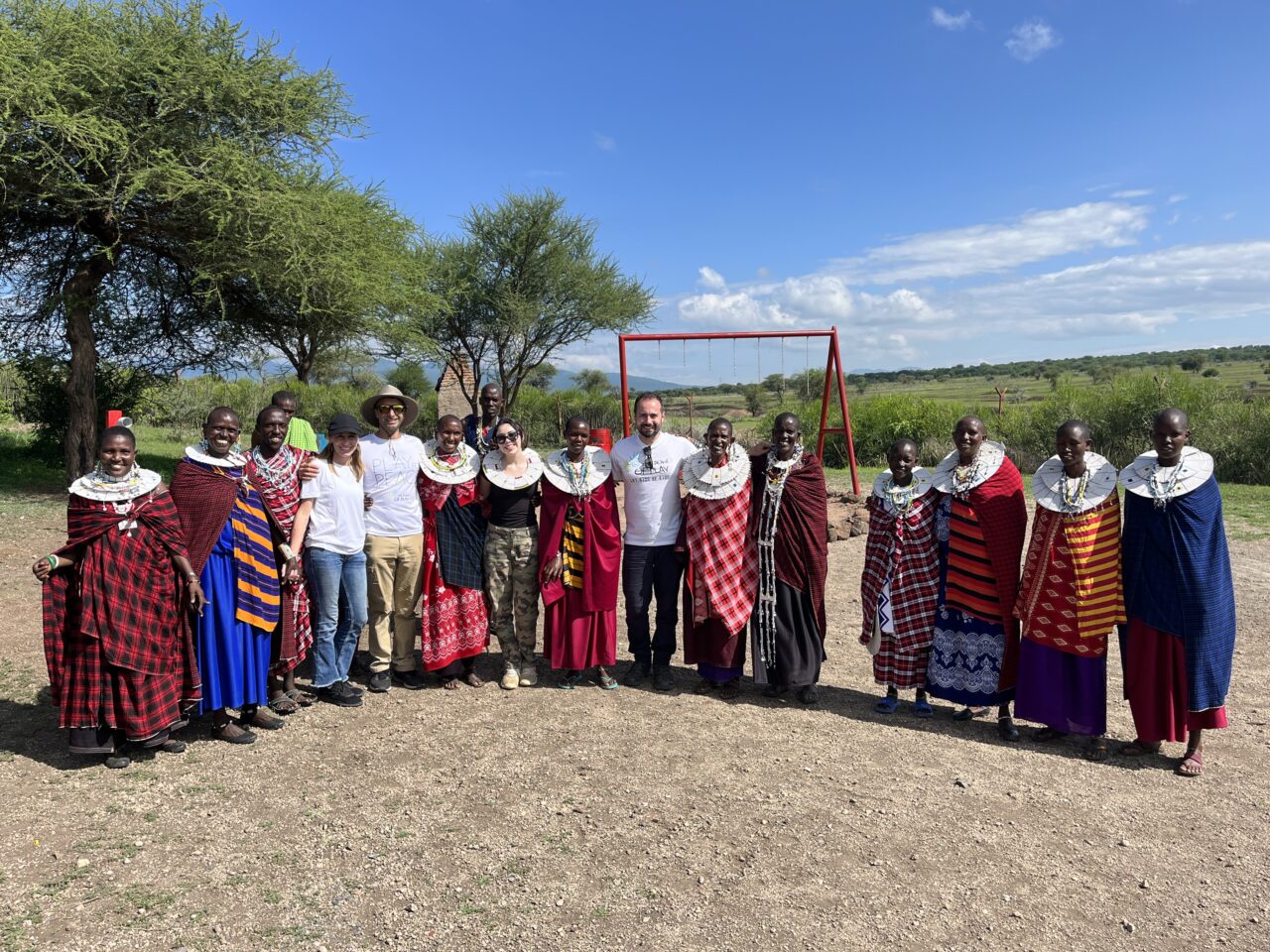ศซร๑ฒสฦฑ Students, Alums Work Across Timezones to Design Playgrounds for Children in Tanzania and Canada

A Maasai Elder plays with children in a new playground designed by students from Emily Carr University and Guangdong University of Technology in collaboration with non-profit The Power of Play. (Photo courtesy The Power of Play)
Posted on | Updated
In collaboration with nonprofit The Power of Play, emerging designers apply their know-how to bring bespoke play-spaces to kids across the globe.
A new collaboration between Industrial Design students, alumni and BC nonprofit saw sister playgrounds built in Squamish, BC, and a Maasai community in Eco Boma, near Makuyuni in Tanzania.
Led by designer and ศซร๑ฒสฦฑ faculty member Christian Blyt, six teams comprising students and alumni from Emily Carr University and Guangdong University of Technology (GDUT) in Guangzhou, China, worked through late 2023 to design sensory playgrounds for children with all abilities.
โItโs been important for students to understand that the children theyโre designing for may have different abilities, but to also think about how they can respect or enhance their specific culture. Because the Maasai are struggling to retain this very rich culture in the 21st century,โ says Christian, who is a visiting professor at GDUT and teaches there twice a year. โWe want to be very, very thoughtful. And for the students, I think itโs been an eye-opening experience.โ
Both the Tanzanian and Canadian playgrounds were completed in December, 2023. A community ceremony marked the opening of the Tanzanian playground on Dec. 18.

Local children play on their new playground in Eco Boma, Tanzania. (Photo courtesy The Power of Play)
Roughly 2,000 children live in the Maasai community where the playground was built. Approximately 300 of them are children with disabilities, including low vision or hearing loss.
Working across timezones and languages, teams from ศซร๑ฒสฦฑ and
GDUT developed proposals for a low-budget, sustainable and locally
sourced playground. They were also charged with ensuring their designs
are engaging for children with disabilities. They worked over a
four-week period with final presentations taking place in late November.
Maasai Elders took part in the selection of the final design. Designer Caden Hao (BDes 2023) volunteered as Christian's teaching assistant on the project.
Along with five GDUT students, designer Shelby Sixsmith (BDes 2021) was part of the team that developed the winning proposal. Their design includes a โweaving wallโ and an awning to filter sunlight and rain to create shifting patterns on the ground.
โIn Maasai culture, thereโs a lot of beadwork, a lot of pattern-making. We wanted to incorporate that in as many elements as we could,โ she tells me via Zoom from Medellรญn, Colombia. The weaving wall, for instance, allows children to create patterns and knots with coloured ropes. Itโs also a โsensory wall,โ where textures can be experienced through touch.

Community Elders and volunteers gather at the newly constructed playground in Eco Boma, Tanzania. (Photo courtesy The Power of Play)
Accessibility and sensitivity to place characterize all of The Power of Playโs projects. The organization builds sustainably produced playgrounds around the globe, bringing care and consideration to its mission of empowering children.
The Power of Play founder and CEO Reza Marvasti says play is a crucial building-block for the kinds of cognitive learning that happen later in life. But play is also how children process difficult emotions or traumas. For Reza, this observation is rooted in personal experience.
โI was born in Iran and was growing up during the Iran-Iraq War,โ he says. โPlay was a safe bubble for me during the bombing. In the bunker, I would play, and that was the only time I was in control. The only time things made sense. Thatโs where this idea is coming from.โ
The Eco Boma playground represents the third project on which Reza, Christian and his students have collaborated. Other projects include a playground built on an orphanage school in Sri Lanka, and a set of smaller interactive objects designed and built by second-year Industrial Design students for the children in the orphanage.

Community Elders and The Power of Play staff members pose for a snapshot with the newly constructed swingset in Eco Boma, Tanzania. (Photo courtesy The Power of Play)
Francine Fang (BDes 2022) worked on the winning proposal for the Sri Lankan playground project. Her team incorporated tactile and sonic storytelling elements throughout their design. Their playground offered children ways to communicate including through vibrations, movement and speaking.
โWe tried to see storytelling from the childrenโs side of things,โ she tells me via Zoom from Luoyang, China. โThis is what inspired our playground. You can touch, feel, listen, see.โ
Reza notes that heโs received glowing feedback both from the communities where playgrounds are built as well as from the student designers.
โIโve had conversations with some of Christianโs students and they told me how important it was to feel their design was making a difference,โ he says. โThey just have so much compassion.โ
and to learn more about their work.
Visit ศซร๑ฒสฦฑ online to learn more about studying Industrial Design at Emily Carr.